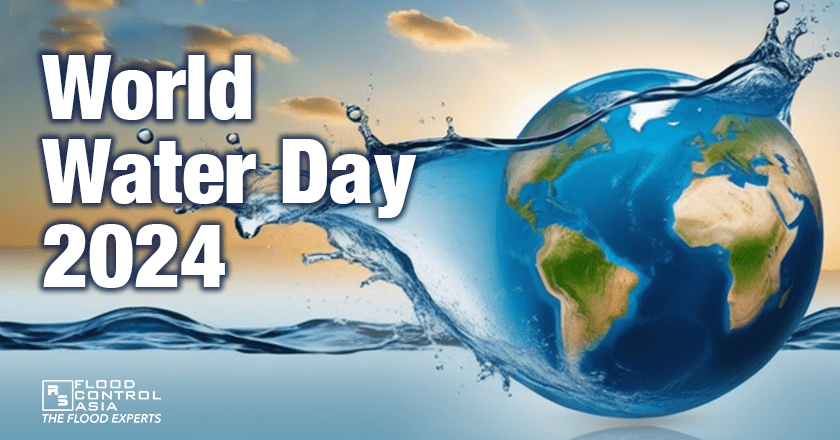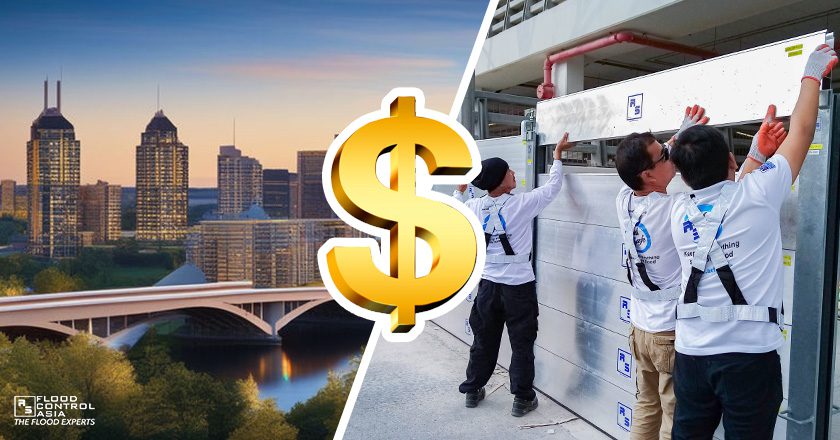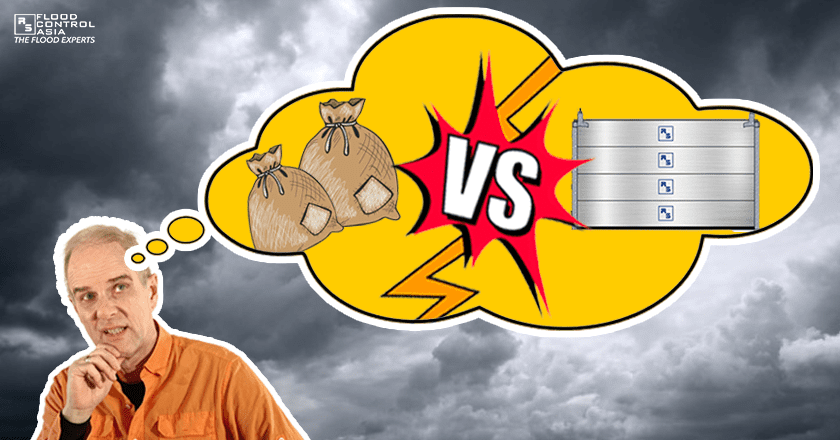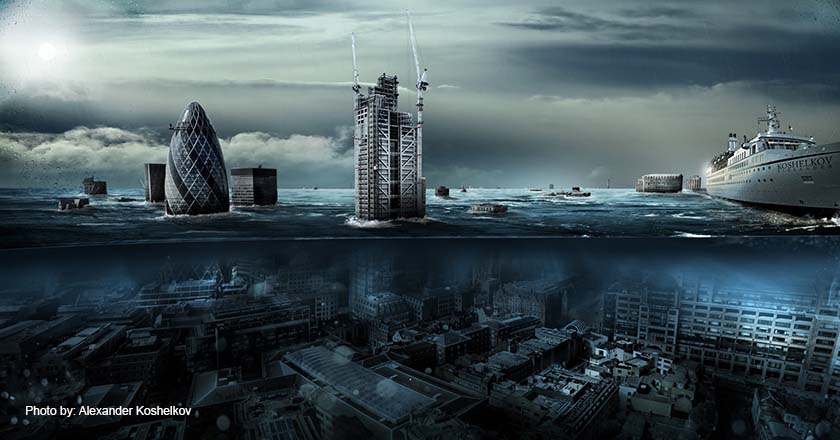The Great Flood that Damaged Kuala Lumpur Greatly
January 8, 2021 | Created by: Andreas Klippe | Comments
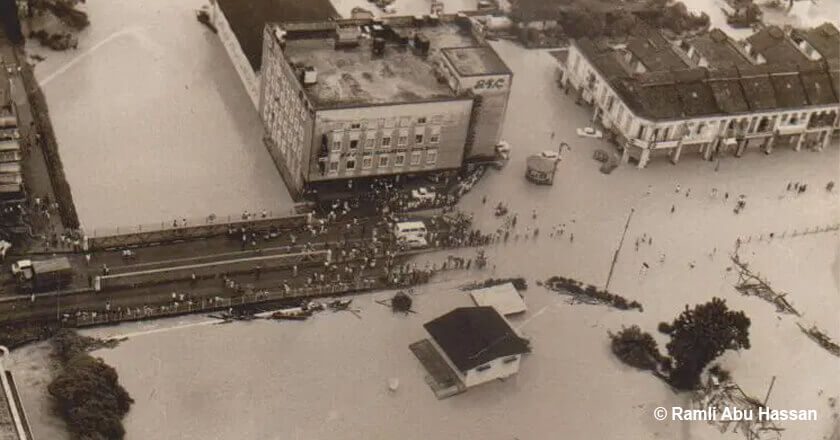
It was the day after Christmas of 1970 when signs of rain were noticed by many people living in Kuala Lumpur, Malaysia. The white-blue sky turned gray and the dark rain clouds began appearing. In just a moment, a few drops of rain fell from the sky. Then some more. Then more. People out on the streets started running for shelter. Many hoped the rain would stop soon.
But it did not.
The rain poured continuously and more intensely for the whole week. By January 4 of the next year, 1971, almost three quarters of the city were submerged underwater. Kuala Lumpur experienced what was known as “The Great Flood”. On this blog, let us take a look at how the flood greatly damaged Kuala Lumpur and how can future flood damages be avoided.
THE GREATNESS OF THE GREAT FLOOD
The Great Flood was caused by a week-long monsoon rain that started on December 26, 1970. The continuous torrential rain caused Klang, Batu and Gombak rivers to swell. The swelling of the rivers submerged almost 60 % of the capital city. A news story said that Kuala Lumpur looked like an ocean at that time. One report indicated that at least 24 persons passed away; however, the number of demise on several more news sources would vary from 30 to 61 people.
Aside from those who passed away, around 100,000 to 180,000 people were affected. 38,000 people turned out to be homeless. The total recorded damage was around RM85 million or USD 22 million.

Below were some effects of the flooding to Kuala Lumpur, as narrated by The Strait Times, January 6, 1971:
- Bus services were affected
- Power supply was cut off
- Some radio stations went “off air” for some time
- Telephones could not be used
- Pipelines bursted
- Debris and garbage floated around
- Commercial firms were closed
- Traffic worsened because road and rail communication were cut and were impassable
- Government workers reported on a skeletal basis
- Families were trapped inside their houses
Also, major buildings and critical infrastructures were submerged under 5 to 6 feet of floodwater. Some of these were:
- Secretariat building
- Supreme court
- Municipal building
- St. Mary’s Church
- Foch Avenue bus station
- AIA building (Insurance building)
- Major roads
On January 5, 1971, the then Prime Minister Tun Abdul Razak declared a state of emergency. Medical teams were deployed to help with the relief operation. People were evacuated from their homes with the use of army boats.
Here are some photos of the Great Flood in 1971. Most photos were taken around the Dataran Merdeka Area (Merdeka Square). Dataran Merdeka is Kuala Lumpur’s City Center and it was the place where Malaysia’s independence from Great Britain was declared.





CLIMATE CHANGE
Aside from the flood in 1971, some flooding situations in 1926, 1931, 1969, 2006, 2007, 2010, 2014, 2017, and 2020 were duly noted because of their impact to the people and the properties in Malaysia. I mentioned in my previous blog, “Why is Malaysia Still Under a Flood Crisis?” that flood is one of the major problems that the country experiences every year.
This year, in January 2021, parts of Malaysia were left under floodwaters after three days of continuous heavy rains. The eastern coast part of Peninsular Malaysia was greatly affected, closing roads and displacing thousands of people. As of January 3, 2021, reliefweb.int recorded that a total of 1,307 families or 4,943 people were affected.
In a news report of the New Strait Times, a climate change expert, Dr. Renard Siew, said that recent floods were connected to climate change. He said that we must recognize that the “storms are getting stronger than ever, [the] rains are heavier than ever, and the damages that these daily storms are causing, are now costlier than ever.”

“This is the future that scientists have long warned about. Welcome to the climate crisis. Welcome to the future,” he said.
He further explained that, “as Antarctica melts, our sea levels will rise and the increase in volume of water means the storms that form over seas will be much stronger. Malaysia is especially prone to this because we lie right next to the Southern Pacific, a body of water which has recorded the highest levels of sea rise in the world.”
Dr. Renard Siew is a climate change advisor to the Centre for Governance and Political Studies (Cent-GPS), a KL-based political science and social behavioral research firm.
Experts here and there are telling us one thing: Climate change is real. It is real and it is worsening the weather conditions, not only in Malaysia, but around the world. Because of climate change, rains are becoming more frequent and the intensity of rainfall increases. An increased rainfall leads to many problems but the worst of them all is flooding. Stories upon stories from around the world narrate the destruction of many properties and the demise of many people as a result of flooding.
FLOOD-PROTECTION AS THE SOLUTION
I don’t want to scare you with an already scary fact, but we should realize that flooding is not just another passing phase. It is recurring and it is worsening. It does not even have a pattern on when it will come: one day you are walking in the park on a sunny day, another day, you are escaping the flood by climbing to the rooftop of your house. Flooding is a great problem but not without a solution.
Flood barriers, made with German technology, is one of the solutions that is reliable and fast. As storms and rain will be much stronger in the future, we need a technology that is very durable, with high resistance to breaking, that can resist extreme weather conditions and that is non-rusting. These German-made flood barriers are made of high-grade aluminum, hot dipped-galvanized or stainless steel and can last up to half a century, 50 years, and even longer! They can be demountable or permanent and can be installed quickly by the user himself or herself.
These kinds of flood barriers have been installed in more than 34 countries already. The RS technology as an example was invented in 1990 and is currently state of the art. More and more engineering firms, architects, business owners, residents, and governments all over the world are considering to include flood barriers in their investments. Why? Because it helps them protect their lives and their assets.
Climate change is not backing out and neither should we. We may not stop the forces of nature but we can always protect ourselves. I hope the national governments of different countries will also consider flood-protecting the critical infrastructures since flooding is not just a simple household problem — it is a GREAT problem, one that encompasses the whole community.

It is to be hoped that together, we can flood protect our community.
To learn more about the latest flood protection technology, subscribe now to our Flood Expert Tips (IF YOU HAVEN’T YET!).
Stay safe and flood free.



